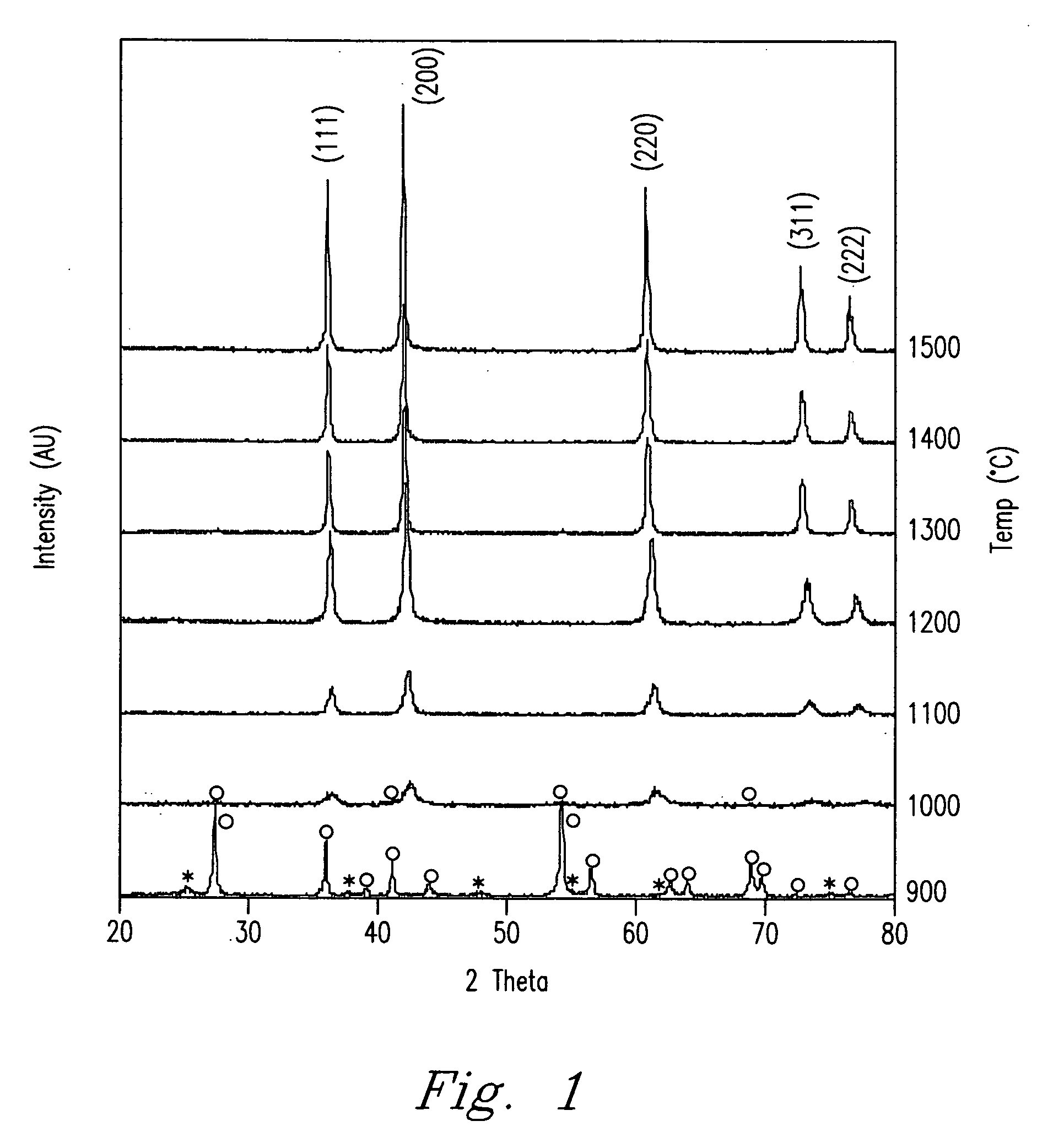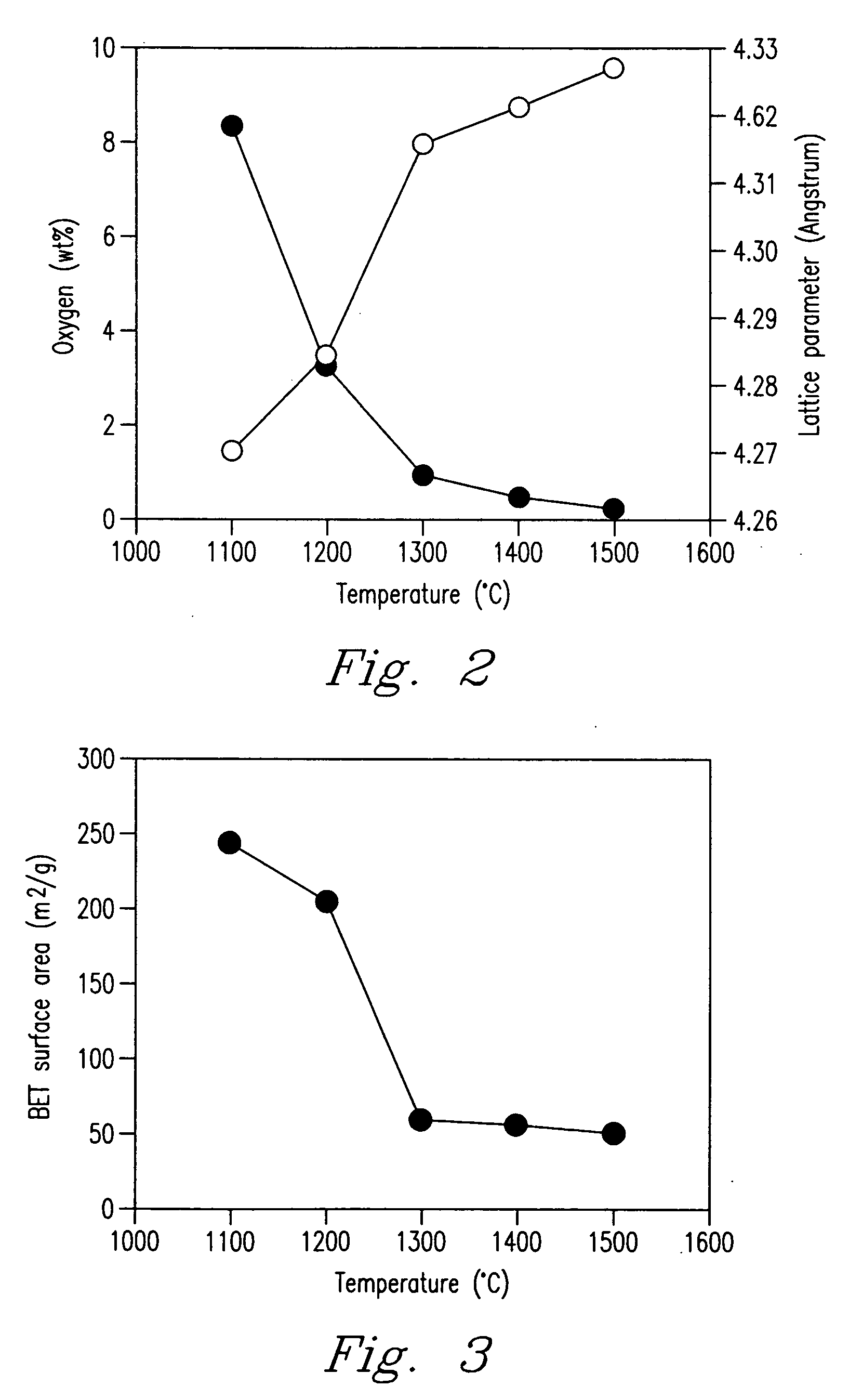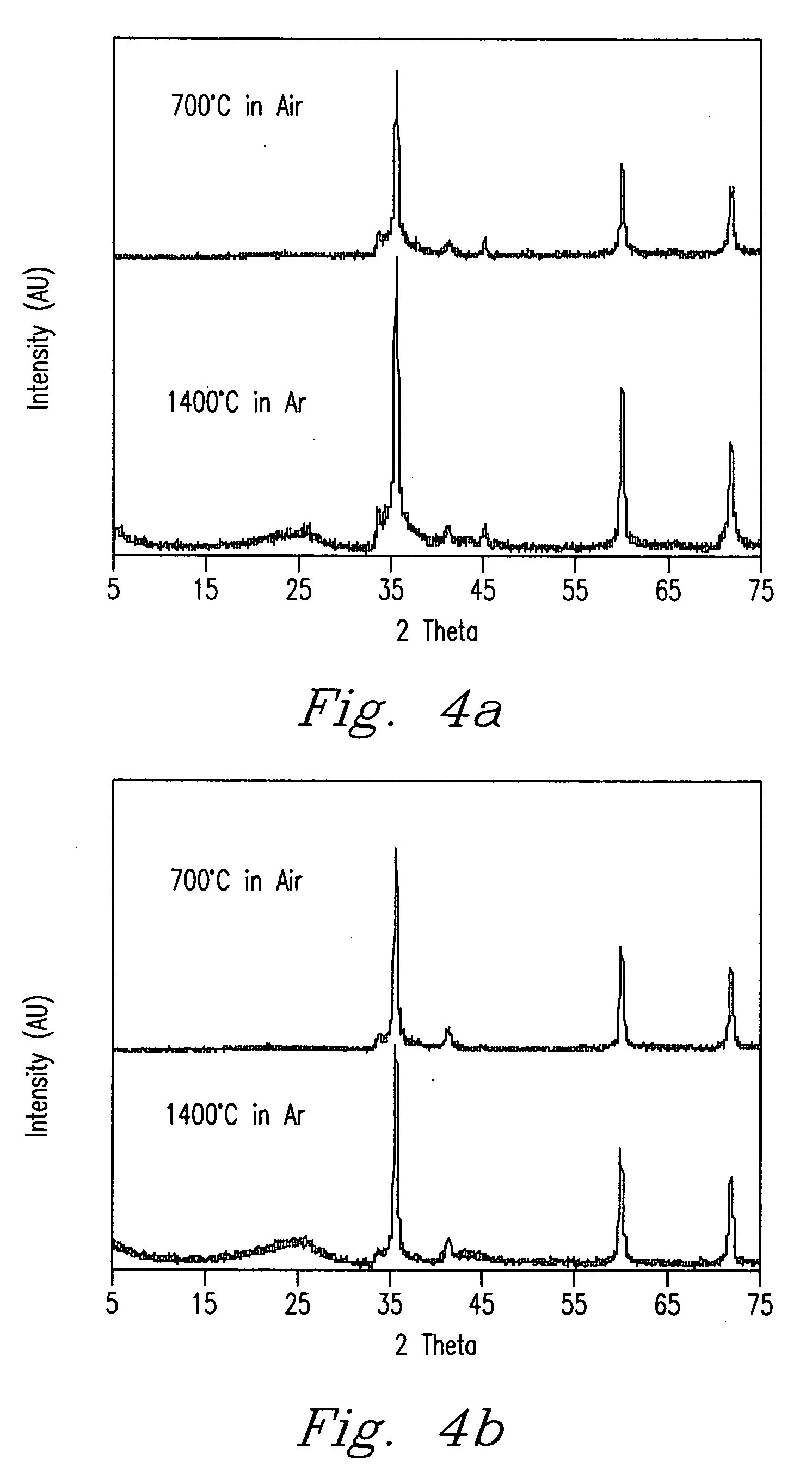Structured inorganic materials and method for making and using same
a technology of inorganic materials and structures, applied in chemical/physical processes, catalyst activation/preparation, packaging, etc., can solve the problems of difficult processing, low production efficiency, and high cost of starting materials for direct carbonization and pyrolysis of metal halides, etc., to achieve high production efficiency, low cost, and high production efficiency.
- Summary
- Abstract
- Description
- Claims
- Application Information
AI Technical Summary
Benefits of technology
Problems solved by technology
Method used
Image
Examples
example 1
[0033]In one experiment, 14.5 grams of hardwood toothpicks (Albertson's, Richland, Wash.) were cut into random length sections of about ⅛ inch to about ¼ inch. Sections were subsequently infused with 6.6 grams of an aqueous titanium hydroxyl lactate complex [(NH4)2Ti(OH)2(C3H5O2)2, 2.23M in Ti)], also known as Tyzor LA® available commercially (DuPont, Wilmington, Del.), and dried at 75° C. in vacuum for about 20 hours, the weight following infusion and drying being equivalent to about 1.8 grams of TiO2. Infused pellets (˜2.003 g) were subsequently heat treated at 1200° C. for about 2 hours in flowing argon. Hardness was measured by crushing a selection of particles between two flat plates by means of an Instron Test Apparatus. The product (0.565 grams) was found to have a crushing strength as hard or harder than a reference compound (0.8 mm Norit ROX® active carbon pellets, NoritAmericas, Inc., Marshall, Tex.). In addition, the product retained the morphology of the starting wood pa...
example 2
[0034]Example 2 details the use of cellulose hierarchical structures (template) as a carbon source and Tyzor LA® as a TiO2 source for the synthesis of TiC nanoparticles by carbothermal reduction in argon.
[0035]A solution of [(NH4)2Ti(OH)2(C3H5O2)2, 2.23 M in Ti)] also known as Tyzor LA® (DuPont, Wilmington, Del.) was used without further purification. Cellulose acetate filter paper (VWR Scientific, West Chester, Pa.) was used as a carbon precursor. Tyzor LA® solution was added to a segment (˜10 mm×10 mm) of filter paper in controlled amounts until the filter paper / Tyzor LA® weight ratio was 4.5 when dried at 100° C. overnight in air. The dried, infused Tyzor LA® filter paper composite was placed in an alumina boat and positioned in a horizontal alumina tube furnace. Temperature was increased to a temperature in the range from about 1000° C. to about 1500° C. at a rate of 4° C. per minute with subsequent heating in argon for a 2 hour duration. XRD patterns were obtained using a Phili...
example 3
[0041]Example 3 describes the synthesis of SiC via the carbothermal reduction of mineralized wood with silica in acidic conditions. The biomorphic cellular SiC ceramics were prepared by controlling the amount of silica and the size of the SiC nanoparticles. Up to 20 wt % of SiO2 was mineralized into wood cellular structures and the hierarchical structures such as cells, lumen, and pits were retained after thermal treatment.
[0042]Wood (pine and poplar) was purchased commercially. The wood was mineralized with silica via a modified sol-gel process as detailed, e.g., by Shin et al. (Adv. Mater. 2003, 9, 76). To the solution of TEOS / HCL / EtOH / H2O (molar ratio=1.00:1.58:4.50:46.24) pieces of dry wood were soaked and kept at 60° C. for 48 hours. Wood pieces were separated from the solution and air-dried. Dried wood / silica composite was placed in an alumina boat and then positioned in a horizontal alumina tube furnace. Temperature was increased up to about 1400° C. at 4° C. per minute rate ...
PUM
| Property | Measurement | Unit |
|---|---|---|
| temperature | aaaaa | aaaaa |
| weight ratio | aaaaa | aaaaa |
| density | aaaaa | aaaaa |
Abstract
Description
Claims
Application Information
 Login to View More
Login to View More - R&D
- Intellectual Property
- Life Sciences
- Materials
- Tech Scout
- Unparalleled Data Quality
- Higher Quality Content
- 60% Fewer Hallucinations
Browse by: Latest US Patents, China's latest patents, Technical Efficacy Thesaurus, Application Domain, Technology Topic, Popular Technical Reports.
© 2025 PatSnap. All rights reserved.Legal|Privacy policy|Modern Slavery Act Transparency Statement|Sitemap|About US| Contact US: help@patsnap.com



